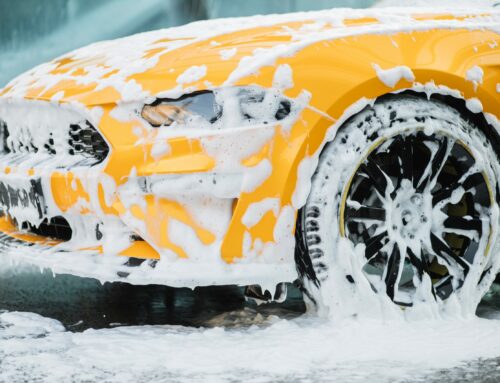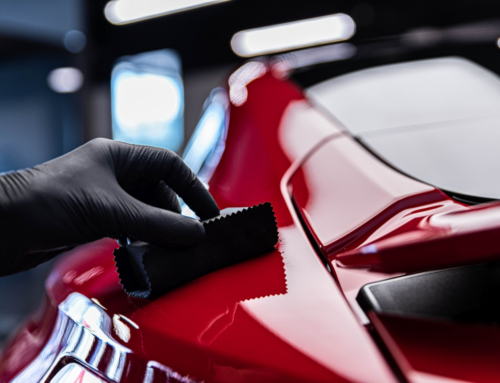Entering the world of car detailing can be both exciting and challenging. As a new detailer, it’s easy to make mistakes that can compromise the quality of your work and damage your reputation. To help you get started on the right foot, here are ten common mistakes new detailers make and how to avoid them.
-
Using Cotton Towels for Product Removal
Using cotton shirts or towels to remove products like polishes and waxes can introduce marring and scratches to your vehicle’s paint. High-quality microfiber towels are essential for this task. They ensure that after you polish and protect the paint, you don’t inadvertently add new imperfections.

Drying with Improper Towels
-
Drying with Improper Towels
Drying your vehicle with old shirts, cotton rags, or bath towels might seem cost-effective, but these materials can cause swirls and scratches. Invest in microfiber waffle weave drying towels, which are designed for drying and are both safe and efficient at removing water from your vehicle’s surfaces.

Detailing in Direct Sunlight
-
Detailing in Direct Sunlight
Detailing your car in direct sunlight can cause significant issues. The surface temperature of your vehicle’s panels can become too hot, causing products like wax, sealant, or polish to evaporate quickly, leading to poor performance and streaky results. Always try to detail in a shaded area or during cooler parts of the day.
-
Avoiding the Use of Buffers
Some detailers shy away from using buffers due to fear of damaging the paint. While there are risks, modern Dual Action Buffers are designed to be safe and effective. They help remove more imperfections and enhance the clarity and gloss of the paint compared to hand polishing. Mastering these tools is crucial for improving your detailing results.

Overusing Products
-
Overusing Products
Applying too much product, whether it’s wax, sealant, or polish, can result in streaking, hazing, and difficult removal. The key is to apply products as thinly as possible. This not only saves time and effort but also ensures a smoother and more effective application.
-
Improper Care of Microfiber Towels
Improperly caring for microfiber towels—such as washing them with regular detergent, drying on high heat, or laundering with regular clothes—can reduce their effectiveness and increase the risk of scratching the paint. Avoid fabric softeners and dryer sheets, wash them separately, and use low heat for drying. Proper care extends the life of your microfiber towels and maintains their performance.

Scrubbing Too Aggressively
-
Scrubbing Too Aggressively
When faced with heavy buildups of dirt or contaminants, aggressive scrubbing might seem like a quick solution. However, this can introduce imperfections into the paint. Use a degreaser or a heavy cleaner to loosen and safely remove these buildups without causing damage.
-
Using Bonnets to Remove Products
Using a buffer with bonnets to remove waxes, polishes, or sealants is not recommended. Bonnets are often made of low-quality microfiber, and the high speeds can cause swirls. Instead, remove excess products by hand using clean microfiber towels for a safer and more effective approach.

Neglecting to Tape Off Trim
-
Neglecting to Tape Off Trim
Forgetting to tape off trim can lead to polish and wax stains on the trim, leaving unsightly white marks. Taping off trim before detailing saves time and effort by preventing these stains. It’s a small step that can make a big difference in the final look of your vehicle.
-
Not Using Grit Guards or the Two-Bucket Method
Improper washing techniques can introduce new imperfections to your car’s paint. Using high-quality products like Grit Guards and the two-bucket method helps minimize this risk. One bucket should contain soapy water, while the other holds clean water for rinsing your wash mitt. This method reduces the chance of reintroducing dirt onto the car’s surface.
By avoiding these common mistakes, you can ensure that your detailing work is top-notch, protecting the paint and delivering impressive results. Invest in the right tools, follow best practices, and continuously educate yourself to improve your detailing skills. Your attention to detail will set you apart in the competitive world of car detailing.



